| ________________
CM . . . . Volume XVII Number 16. . . .December 17, 2010. 
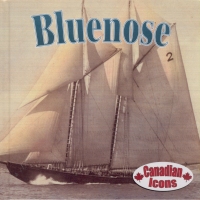 |
Bluenose. (Canadian Icons).
Tatiana Tomljanovic.
Calgary, AB: Weigl, 2011.
24 pp., pbk. & hc., $10.95 (pbk.), $23.95 (hc.).
ISBN 978-1-77071-583-7 (pbk.), ISBN 978-1-77071-576-9 (hc.).
Subject Headings:
Bluenose (Ship)-Juvenile literature.
Grades 2-3 / Ages 7-8.
Review by Gail Hamilton.
***/4
|
| |
 |
Canoe. (Canadian Icons).
Sandra McIntyre..
Calgary, AB: Weigl, 2011.
24 pp., pbk. & hc., $10.95 (pbk.), $23.95 (hc.).
ISBN 978-1-77071-582-0 (pbk.), ISBN 978-1-77071-575-2 (hc.).
Subject Headings:
Canoes and canoeing-Canada-Juvenile literature.
Indians of North America-Boats-Canada-Juvenile literature.
Grades 2-3 / Ages 7-8.
Review by Gail Hamilton.
***/4
|
| |
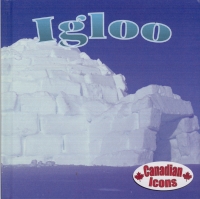 |
Igloo. (Canadian Icons).
Lauren Diemer.
Calgary, AB: Weigl, 2011.
24 pp., pbk. & hc., $10.95 (pbk.), $23.95 (hc.).
ISBN 978-1-77071-585-1 (pbk.), ISBN 978-1-77071-578-3 (hc.).
Subject Headings:
Igloos-Juvenile literature.
Inuit-Dwellings-Juvenile literature.
Grades 2-3 / Ages 7-8.
Review by Gail Hamilton.
***/4
|
| |
 |
Loonie. (Canadian Icons).
Simon Rose.
Calgary, AB: Weigl, 2011.
24 pp., pbk. & hc., $10.95 (pbk.), $23.95 (hc.).
ISBN 978-1-77071-586-8 (pbk.), ISBN 978-1-77071-579-0 (hc.).
Subject Headings:
Dollar, Canadian-Juvenile literature.
Money-Canada-Juvenile literature.
Grades 2-3 / Ages 7-8.
Review by Gail Hamilton.
***/4
|
| |
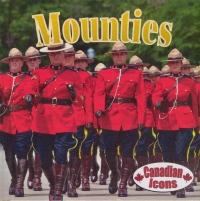 |
Mounties. (Canadian Icons).
Annalise Bekkering.
Calgary, AB: Weigl, 2011.
24 pp., pbk. & hc., $10.95 (pbk.), $23.95 (hc.).
ISBN 978-1-77071-584-4 (pbk.), ISBN 978-1-77071-577-6 (hc.).
Subject Headings:
Royal Canadian Mounted Police-Juvenile literature.
Grades 2-3 / Ages 7-8.
Review by Gail Hamilton.
***/4
|
| |
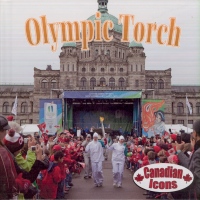 |
Olympic Torch. (Canadian Icons).
Simon Rose.
Calgary, AB: Weigl, 2011.
24 pp., pbk. & hc., $10.95 (pbk.), $23.95 (hc.).
ISBN 978-1-77071-587-5 (pbk.), ISBN 978-1-77071-580-6 (hc.).
Subject Headings:
Olympics-Social aspects-Canada-Juvenile literature.
Olympic Torch Relay-Juvenile literature.
Grades 2-3 / Ages 7-8.
Review by Gail Hamilton.
***/4
|
| |
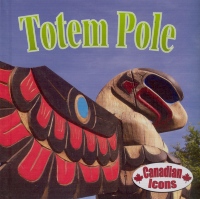 |
Totem Pole. (Canadian Icons).
Jennifer Howse.
Calgary, AB: Weigl, 2011.
24 pp., pbk. & hc., $10.95 (pbk.), $23.95 (hc.).
ISBN 978-1-77071-581-3 (pbk.), ISBN 978-1-77071-574-5 (hc.).
Subject Headings:
Totem poles-Canada-Juvenile literature.
Indian sculpture-Canada-Juvenile literature.
Grades 2-3 / Ages 7-8.
Review by Gail Hamilton.
***/4
|
|
|

excerpt:
Carving a totem is hard work that takes a long time. First, the carver fells a tree. Most often, the tree is a tall red cedar. The tree log is brought to the village and laid down. The carver strips the sap and bark from the log. Then, the carver uses charcoal to draw the plan of the totem onto the log.
A carver needs sharp carving knives. A large adze is used to remove big pieces of wood from the log. A smaller adze is used to create the detail of the design. (From Totem Pole.)
Designed to introduce children to the symbols of Canada, the seven-volume "Canadian Icons" series examines the history of the various symbols and the ways in which they are used in the present day. Each title is comprised of 11 chapters, a table of contents, and a very brief glossary and index. On each double-page spread, there is a paragraph within a text box on one side, with a photograph, suited to the text, on the opposite page. The text is printed in a large, very simple font and is written in fairly short sentences in a straightforward manner that is easy for young readers to comprehend. Wonderful illustrations consist of both black and white archival photographs and colour photos, while the backgrounds have subtle tone-on-tone motifs related to the book's topic. For example, the backgrounds for the title about the Bluenose consist of ships' wheels rendered in medium blue. At the back of the books, there are step-by-step instructions for making a craft using fairly common household items. However, since some of the steps can be rather complicated, accompanying diagrams or photos would have been helpful, especially a photo of the finished product. Finally, there are four web sites listed for those students who would like to explore the topic further.
Built as a racing boat and launched in 1921 in Lunenburg, NS, the Bluenose, whose image appears on the Canadian dime, was a schooner designed by architect William J. Roue. It got its moniker from a nickname for sailors. At that time, sailors wore blue mittens at sea, and when they wiped their noses, they often got blue marks on them. These and other facts can be found in Bluenose. Some of the topics include the main parts of a schooner, the use of the Bluenose as a fishing boat and as a freighter, its eventual shipwreck off the coast of Haiti, and the creation of the Bluenose II, a replica built in 1963 for the purpose of appearing at special events in Canada. Instructions for building a toy sailboat out of a plastic milk jug are provided.
Canoe examines this important mode of transportation in Canadian history, from its use by First Nations peoples and European fur traders to its current use for pleasure. The canoe's materials have ranged from hollowed out tree trunks and birchbark to modern wood and canvas models. In this title, readers will learn about the parts of both a canoe and a paddle, portaging, and the types of canoe races- sprints and marathons- that take place nowadays. The longest of these races is the Yukon 1000 during which paddlers travel 1600 kilometres down the Yukon River. One double-page spread in this title shows a comparison between different kinds of sailing vessels- a kayak, a canoe, a tugboat and an ocean liner. Unfortunately, because they are shown in separate photographs with only their given lengths printed alongside, there is no sense of scale. Perhaps the photos could have been overlapped or a diagram used in order to show readers the differences in size. Creating a paper canoe is the featured craft at the back of the book.
The history and importance of igloos to the Inuit, who followed migratory herds for food, is explained in Igloo Still used today as a temporary shelter for travelers, the igloo can be built in just two hours. It can house one person, a family, or even a group of 20 (for this large a group there would be several igloos connected by tunnels). In this title, readers will learn very basic facts about igloo construction, as well as how to insulate the igloo against the elements, some ideas being the building of a tunnel entryway to shield the inhabitants from the wind and cold, and the melting of interior walls with a flame to create ice for added strength. Inside the igloo, there are animal skins on the floor, a stone lamp for light and warmth, a sleeping platform, and even a stove (although this requires ventilation). Toonik Tyme, a festival held in Iqaluit, holds a contest in which the winner is the person who can build the strongest igloo in the shortest amount of time. The craft for readers to try is a min-marshmallow igloo.
On June 30th, 1987, the loonie, Canada's one-dollar coin, made its debut. Loonie highlights the characteristics of the coin (size, materials and shape), its designer, and the steps involved in creating the coin. Minted in Winnipeg, loonies are fashioned from melted nickel and bronze that is rolled into a flat sheet, then cut into coins by a machine, and die-stamped with the patterns. This title explains the terms obverse and reverse (pertaining to heads and tails, respectively) and what images appear on each side of the coin. There is also mention of various other birds that have appeared on the loonie- the Canada goose, the snowy owl, and the tufted puffin, to name a few, and commemorative loonies which do not have the common loon imprinted on them. Some examples of commemoratives include the 1992 coin, minted for Canada's 125th anniversary and showing the Parliament Buildings, the 2005 Terry Fox commemorative loonie, and the 2010 inukshuk coin, made especially to celebrate the Vancouver Olympics. Finally, there are a couple of stories about loonies being buried under the ice at Olympic hockey and curling rinks. These loonies were purported to bring good luck to Canadian teams. Both the men's and women's hockey teams won gold medals at the 2002 Winter Olympics, and Canadian curlers won gold in 2006. As a craft idea, students can design their own loonie.
The RCMP was an amalgamation of the North West Mounted Police, begun in 1873, and the Dominion Police. Since 1920, "Mounties" have served as Canada's national police force in over 750 detachments all over the country, including remote areas of the north. Mounties focuses on the work that the RCMP performs (although this part is rather sketchy and assumes that students understand all of the tasks done by a police officer) at home and abroad, including peacekeeping missions and training of police forces in other countries. There is also information about the two types of uniforms (the everyday gray and blue uniform as well as the famous red serge), the many modes of transportation employed by the RCMP (cars, bikes, motorboats, planes, vans, trucks, snowmobiles and even dogsleds), the world-renowned Musical Ride, and the qualifications required to become a Mountie. Children can make a little Mountie doll out of a paper cup, a styrofoam ball and craft foam. However, many of the supplies listed would not likely be readily available at home and would necessitate a trip to the craft or dollar store.
Including the title Olympic Torch as part of the "Canadian Icons" series is a bit of a mystery as the torch had its beginnings in ancient Greece. However, the author could be capitalizing on the Winter Olympics, held in Vancouver in 2010. In this volume, readers will find out about the torch's first appearance at the modern Olympics in 1928, its symbolism, the traditions involving the torch and the torch relay, and the various designs that were created for the three Olympic Games held in Canada. For the Calgary games in 1988, the torch resembled the Calgary Tower, while the 2010 Olympic torch showed lines made by winter sports, such as skiing and skating, on snow and ice. There are many interesting facts pertaining to the torch relay of the Vancouver Olympics: the relay took 106 days over 45,000 kilometres through more than 1,000 communities and the torch was carried by 12,000 people. It travelled via First Nations canoe, dogsled, snowmobile, tractor, mountain bike, snowshoes, surfboard, ferry and plane. Readers will be surprised to learn that, while on board an airplane, the flame was placed into miners' lanterns for safe transport. At the back of the book, there are instructions for making an Olympic torch out of a paper cone and some coloured tissue.
Totem Pole describes the creation of this important symbol for First Nations peoples of Canada's Pacific Northwest. Featured in the title are the steps in making a totem pole, the materials used, the places where one is likely to see totem poles, and the purpose of totem poles. Some of the poles serve as family memorials while others can be grave posts, house posts, doorway poles or welcome poles. Raising a totem pole is a community celebration, often with a potlatch ceremony, with singing, dancing and drumming. Other topics in this book include the meanings of some animal totems and the influence of the Europeans on totem pole creation. The craft is the carving of a small totem pole out of modeling clay.
Though the books might be considered a bit pricey for only 24 pages, they provide just enough information for the targeted age group and will sustain the reader's interest.
Worthy of purchase for the school library to support the social studies curriculum.
Recommended.
Gail Hamilton is a former teacher-librarian in Winnipeg, MB

To comment on this title or this review, send mail to
cm@umanitoba.ca.
Copyright © the Manitoba Library Association. Reproduction for personal use is permitted only if this copyright notice is maintained. Any other reproduction is prohibited without permission.
NEXT REVIEW |
TABLE OF CONTENTS FOR THIS ISSUE- December 17, 2010.
AUTHORS |
TITLES |
MEDIA REVIEWS |
PROFILES |
BACK ISSUES |
SEARCH |
CMARCHIVE |
HOME |






